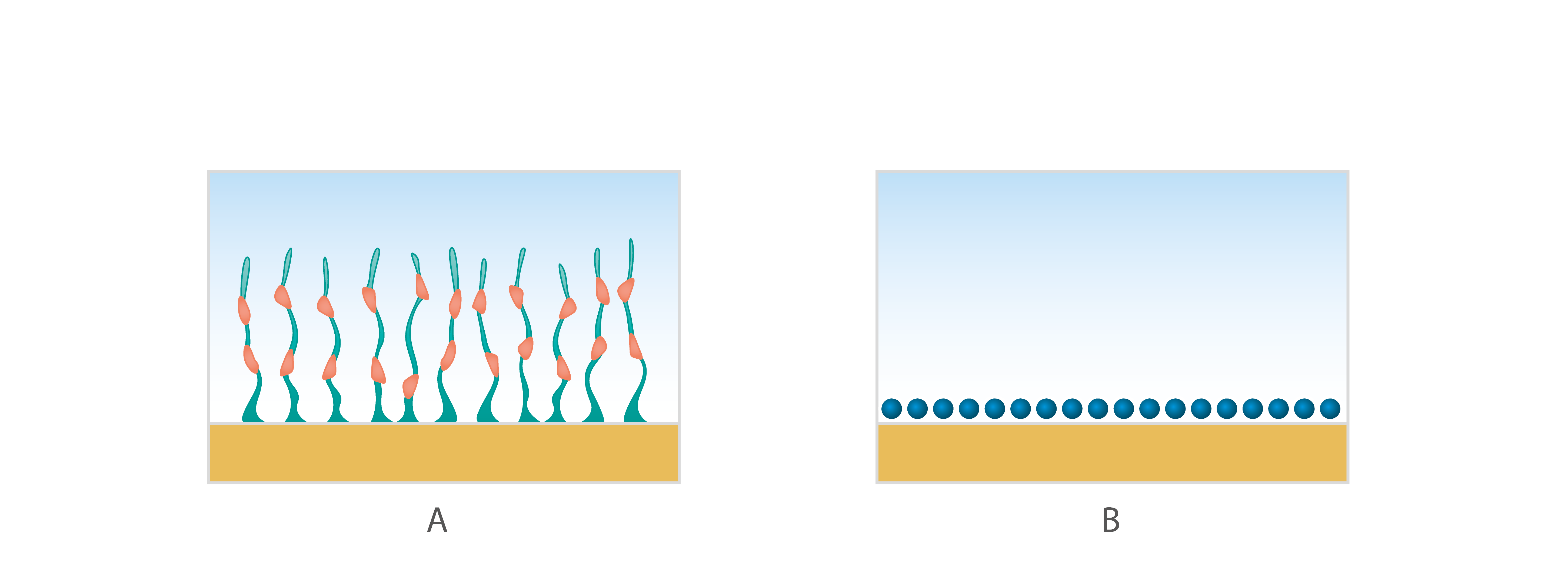When talking about Quartz Crystal Microbalances, so called QCM:s, one often comes across the concepts of ‘dissipation’ or ‘damping’. Here we explain what these concepts mean, and why are relevant in the context of QCM-based instrumentation and QCM measurements.
The term ‘Dissipation’, or “energy dissipation”, to be more precise, refer to the energy that is lost from the system under study. A QCM is a harmonic oscillator and like all real-world oscillators, it is damped.
An oscillator that is not forced to oscillate by an external force, will gradually oscillate with lower and lower amplitude. Eventually, the oscillation will die out. This damping of the oscillation amplitude comes from frictional losses, such as internal friction in the oscillator itself or frictional losses in the surrounding medium (air, water, etc). The friction causes oscillatory energy to be dissipated as heat, hence the name Dissipation.
In the case of QCM, the induced energy losses will mainly originate from materials in contact with the oscillating sensor surface. All material in contact with this surface will induce energy losses. The phenomenon is particularly pronounced in the presence of bulk liquids or at the deposition of soft films, such as biomolecule- or polymer-based layers.
During the oscillation, liquids and soft films, Fig. 1 A, in contact with the surface will be deformed, which results in energy being lost from the system. When the sensor surface is in contact with air or vacuum, on the other hand, the induced energy losses are comparatively small. The same goes for the losses induced by the deposition of thin and rigid layers, Fig. 1B. Thin and rigid layers do not deform during the oscillation, and the losses are therefore smaller than those induced by soft and/or thick layers. Consequently, high dissipation indicates that we have soft, or viscous, material in contact with the surface, while low dissipation indicates that the material at the surface is rigid and follows the oscillation.

Figure 1. Schematic illustration of two different types of layers at a QCM sensor surface which would result in different amount of energy loss. In A), a hydrated and soft viscoelastic layer which would induce a large energy loss, and in B), a thin and rigid layer where the energy loss would be small.
An important parameter describing the characteristics of an oscillator is the quality factor, or Q factor. This is a dimensionless parameter that describes the damping of the oscillation at resonance, by relating the amount of energy stored to the amount of energy lost. The dissipation, D, which is the inverse of the Q factor, is the sum of all energy losses in the system per oscillation cycle. It can also be defined as the energy dissipated per oscillation, divided by the total energy stored in the system.

As can be concluded from Eq. 1, a high Q factor indicates that the energy loss is small and that the oscillation will persist for a long time, and vice versa, Fig. 2. The higher the Q the lower the damping and the longer the oscillation will keep on going.

Figure 2. In the case of a tuning fork (left), the dissipation is low, and the oscillation will persist for a long time. In the case of Jello, the energy dissipation is higher, and the oscillation will die out faster.
The concepts of ‘dissipation’, ‘damping’ and “energy loss” which are often encountered in the context of Quartz Crystal Microbalances, QCM:s, refer to the energy that is lost from the system under study, i.e. the QCM, which is a damped harmonic oscillator. The energy losses will mainly originate from materials in contact with the oscillating sensor surface, and the dissipation can therefore serve as a valuable source of information about the material under study.
Download the overview to learn more about the dissipation, why it is important in the context of QCM measurements, and how the information about the energy loss can be captured.
Editor’s note: This post was originally published in June 2018 and has been updated for comprehensiveness
Compared to QCM, QCM-D measures an additional parameter, and provides more information about the system under study.
Learn about QCM-D, Quartz Crystal Microbalance with Dissipation monitoring - an analytical tool for surface interaction studies at the nanoscale.
Learn about of the acoustic technology, QCM-D, via musical instrument analogies.
Here we explain how Quartz Crystal Microbalance with Dissipation monitoring, QCM-D, works.
Read about how and the QCM fundamental frequency matters in measurements
Read about why it is important for the mass distribution on the QCM sensor to be even, and what the consequences are if it is not.
Learn more about the Sauerbrey equation and when it should be used.
At first glance, SPR and QCM-D are quite similar. Learn about the key differences and when to use which method
By integrating QCM-D and electrochemistry into EQCM-D, it is possible to answer questions that neither technique could address alone.
